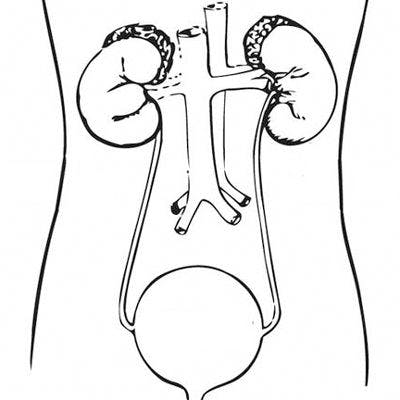New Resource From ACCC Explores Immune-Related AEs, Telemedicine, and Survivorship
Telemedicine increases efficiencies, supports coordinated care, and promotes flexibility in follow-up by allowing patients to be seen at any time and from any location.

In recognition of the unique challenges the regular use of immunooncology agents pose, the Association of Community Cancer Centers (ACCC) Immuno-Oncology Institute is providing a new resource titled “Immuno-Oncology in 2020: What We’ve Learned and What Lies Ahead.”1
The report addresses topics expanded by the emergence of immunotherapy, now a decade old, marked by the approval of sipuleucel-t (Provenge) for prostate cancer in 2010.2 These topics include immune-related adverse effects (irAEs), increased use of telemedicine, and extended survivorship planning.
“Immuno-oncology therapy is moving away from stage 4 disease,” Sigrun Hallmeyer, MD, chair of the executive committee at the Immuno-Oncology Institute, said in an interview with Targeted Therapies in Oncology. She noted that these therapies are not only gaining ground in various cancer settings but also being used earlier in the treatment regimen.
Virtual Toxicity Team Practice Spotlights With greater use of immunotherapy, the range, variability, and complexity of AEs needs to be addressed. Related toxicities are a challenge to recognize and often require hospitalization and specialist care. Because using these agents with other treatments has shown an outcome benefit, immunotherapy plus chemotherapy or targeted therapy—and even immunotherapy combinations—are viable options that are undergoing evaluation.
“I think the big issue with immuno-oncology isn’t the vast number of agents that are becoming available but how they are being combined with some of the more traditional treatment modalities,” said Hallmeyer, who is also the medical director of the cancer service line at the Advocate Lutheran General Hospital in Park Ridge, Illinois. Distinguishing AEs of immunotherapy from those commonly experienced with targeted therapy or chemotherapy remains a challenge, she added.
To further address irAEs, the institute recognized that any organ can be affected, and signs and symptoms may present soon after the fi rst dose of immunotherapy or months after stopping treatment. As a result, toxicity management may require the expertise of specialists in rheumatology, gastroenterology, endocrinology, cardiology, urology, pulmonology, hepatology, and infectious disease.
Working with 3 ACCC members—Cleveland Clinic in Ohio; the Sidney Kimmel Comprehensive Cancer Center at Johns Hopkins University in Baltimore, Maryland; and Jefferson Health in Philadelphia, Pennsylvania—the institute developed a series of Virtual Toxicity Team Practice Spotlights.
These programs have established virtual mechanisms for coordinated toxicity management. Cleveland Clinic, for example, runs a monthly irAE tumor board involving individual patient cases, inviting in-person and virtual participants. Nononcology specialists are encouraged to attend and contribute their expertise in real time during a virtual discussion that includes relevant multidisciplinary team members. The initiative illustrates the value of creating a process for virtual toxicity management.
Community oncologists must be able to deliver this treatment, manage the AEs, and educate their patients and peers, Hallmeyer said: “As more patients are treated, we’re seeing the need to bring in more clinical experts outside of oncology to manage their adverse effects.”
“Reimbursement is a key driver of this telemedicine movement. If that goes away, the enthusiasm of health care providers will also go away.”
The Sidney Kimmel Comprehensive Cancer Center has created an algorithm to support irAE recognition and management. The virtual Immunotherapy Response Toxicity (IR-Tox) Team includes pharmacists, radiologists, and pathologists. The algorithm uses an electronic referral template that clinicians can use to seek assistance from the team. The IR-Tox Team can also use the template to triage clinical questions as they arise in real time and identify the appropriate specialist to address them.
At Jefferson Health, members of the irAE management team use electronic medical records, phone, email, or text to communicate with each other. This approach offers specialists fl exibility in responding to questions about irAEs as they emerge without having to shift their schedules to attend a meeting at a designated time and place.
Telemedicine Expansion
Coupling these communication modalities with videoconferencing increases the reach of telemedicine, a technology that was barely a blip on the radar just 6 months ago. Almost overnight, Hallmeyer said, telemedicine has become a necessity because of the coronavirus disease 2019 (COVID-19) pandemic.
Through telemedicine, data can be shared with specialists who can participate in the virtual chart review with the patient present in real time. “That surpasses what we used to be able to do because of busy schedules,” she said. She admits that her fi rst forays into the telemedicine field were not satisfactory, but with time and practice, most have adapted and improved their experience and acuity (FIGURE).1
To minimize patient and staff exposure to COVID-19 and allow research presentations and educational seminars to continue, telemedicine capabilities have been an eye-opener, according to the paper. For patients, telemedicine improves travel time to and from appointments, allows for more rapid and regular checkups during treatment, and creates a greater sense of safety and security.
Telemedicine increases efficiencies, supports coordinated care, and promotes flexibility in follow-up by allowing patients to be seen at any time and from any location.
When COVID-19 first emerged in the United States, the Centers for Medicare & Medicaid Services temporarily broadened access to telemedicine services, including virtual visits and e-visits, to ensure patient access to health care. The agency also expanded the types of medical specialists who can bill for their services when providing Medicare telemedicine services from a distant site.3
Whether telemedicine continues after COVID-19 passes is unknown, but the Centers for Medicare & Medicaid recently proposed a permanent expansion. Hallmeyer thinks reimbursement will be a big factor. “Reimbursement is a key driver of this telemedicine movement. If that goes away, the enthusiasm of health care providers will also go away,” Hallmeyer said.
Survivorship Planning
With the expansion of immunotherapy, the transition to patient survivorship will grow. Managing that transition, which addresses quality-of-life issues and the possibility of recurrence, is an emerging area of need for patients and providers.
The report recommends developing a survivorship care plan that designates a staff member to identify appropriate patients and deliver the plan in an extended visit, with extensive follow-up after delivery.
Information about diagnosis, clinical stage, imaging, and treatment summary, as well as patient-friendly guidance on how to recognize the signs and symptoms of delayed irAEs with drug-specifi c information, should be included. Ongoing monitoring and contact information for all providers involved in the patient’s care, including subspecialists, are also recommended.
As immuno-oncology expands, the institute continues to provide information and resources to practicing physicians in the community setting. “Clearly, we’re breaking into new territory and broadening where immuno-oncology can be used to treat patients,” Hallmeyer said.
References:
1. Immuno-oncology Institute. Immuno-oncology in 2020: what we’ve learned and what lies ahead. Association of Community Cancer Centers. June 16, 2020. Accessed August 4, 2020. https://bit.ly/2EMOK8d
2. April 29, 2010 approval letter - Provenge. FDA. April 29, 2010. Accessed July 15, 2020. https://bit.ly/2ZAHN2h
3. Physicians and other clinicians: CMS fl exibilities to fi ght COVID-19. Centers for Medicare & Medicaid Services. April 29, 2020. Accessed July 15, 2020. https://go.cms.gov/3eznwhD




















2 Commerce Drive
Cranbury, NJ 08512
All rights reserved.

